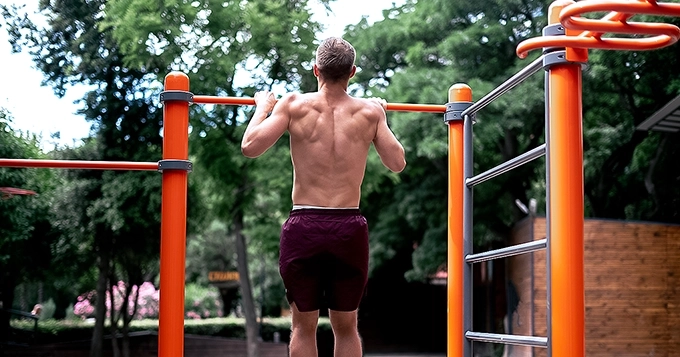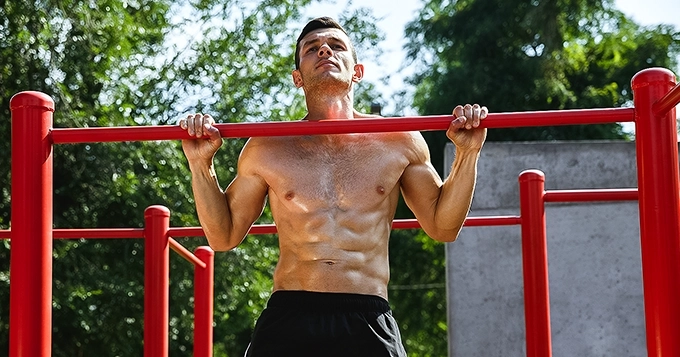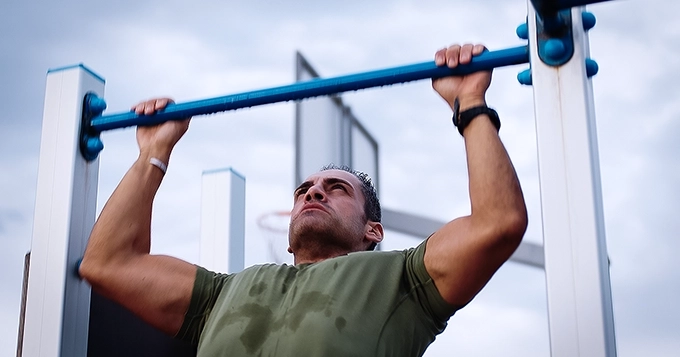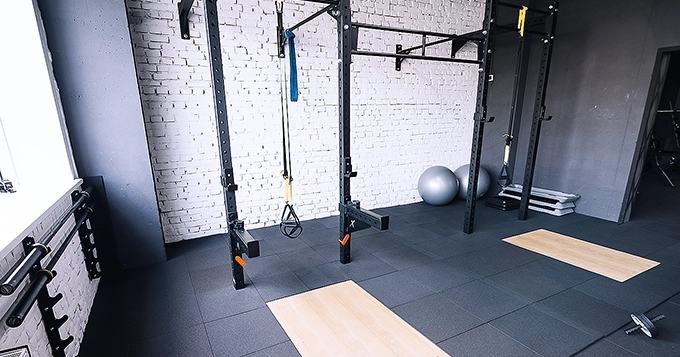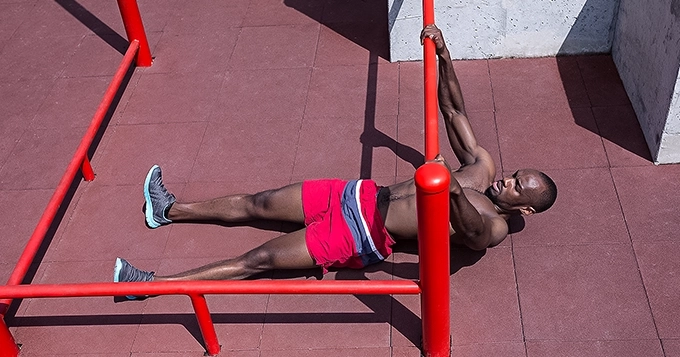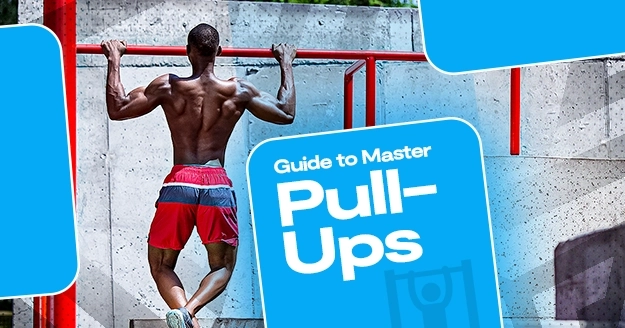Have you ever watched someone effortlessly doing pull-ups and wished you could do the same? Or perhaps you’ve avoided the pull-up bars altogether, afraid of looking silly or not being able to do it properly. You’re not alone. Pull-ups are notoriously challenging because they require a lot of strength and conditioning.
Many people find pull-ups intimidating, which is a shame because they offer numerous benefits for your body. They work out your entire upper body, strengthen your back muscles, engage your core, and even help improve your posture like no other exercise can.
But don’t worry, there’s hope! This article could be just what you need: to learn the correct pull-up technique and gradually build your strength until you can conquer the pull-up.
What is pull-up?
A pull-up is a strength-training exercise where you hang from a bar with your arms extended and then pull yourself up until your chin passes the bar. Pull-ups offer comprehensive upper body strengthening, engaging back, arms, and shoulder muscles while enhancing core stability, posture, and overall fitness levels.
What muscles do pull-ups work?
With the correct pull-ups techniques, you can work the following muscles:
Primary Muscles (Movers):
- Latissimus Dorsi or lats (largest muscle of your back)
- Biceps Brachii
- Brachioradialis and brachialis (forearms)
- Infraspinatus
- Lower Trapezius
Secondary muscles:
- Rear deltoid
- Rhomboids
- Levator scapulae
- Pectoralis Major/Minor
Stabilizers:
- Rotator Cuff Muscles (infraspinatus, supraspinatus, subscapularis, and teres minor)
- Triceps
- Obliques
- Erector Spinae
How To Do A Pull-up With Perfect Form:
Set-Up:
With your palms facing away from you, grasp the pull-up bar with your hands slightly wider than shoulder width.
Execution:
- Lift your feet off the floor, allowing your body to hang with your arms fully extended. Engage your core, contract your glutes, and flex your thighs.
- Squeeze your shoulder blades together and drive your elbows towards your hips, bringing your chin above the bar while breathing out.
- Keep a slight bend in your elbows as you slowly lower yourself while breathing in.
Pull-up tips
- Offset weight using a pull-up machine
While not as effective as classic pull-ups, this method excellently decreases resistance and develops muscles until you can perform repetitions with more of your weight. You will most likely have access to a pull-up machine with a gym membership.
But, if you are working out in the comforts of your home, continue reading the next tip.
- Offset weight using exercise bands
You can mount a pull-up bar on a door if you exercise at home. The exercise band is attached to the bar overhead and can then be used to offset some of your body weight. You can perform your repetitions by placing your foot or knee on the bottom of the band. You can purchase bands in a range of strengths to give you the support you require.
- Offset weight by asking a friend for help
If you have one, you can put your friend or training partner to work. Your companion will support you by holding your legs or feet while lifting you. Naturally, your training partner’s aid will be less necessary as you strengthen. You will then be able to do full pull-ups using your strength.
- Focus on Form
Pay close attention to proper pull-up form to ensure you engage the right muscles and avoid injury. Ensure your chest is up, shoulders down and back, then pull yourself up in a smooth, controlled motion.
- Gradually Increase Reps
Once you learn the correct pull-up technique, gradually increase your reps in each set.
- Be Patient and Consistent
Pull-ups can be challenging, especially for beginners. Just be patient and stay consistent with your training. Don’t forget to celebrate small victories so you can stay motivated.
Progressive Pull-Ups
Find a pull-up variation you can do safely and competently. Work it hard once or twice a week until you meet the goal of sets and reps with the correct form for pull-ups. Move on to a more challenging exercise and repeat. Pull-up is a challenging exercise to master, so begin with baby steps.
These are exercises to develop your strength to make a full pull-up:
1. Wall Pull-Ups
Goal: 3 Sets of 50 Repetitions
Many people start with exercises that are too difficult for them, so they develop bad form habits. Wall Pull-Ups are easy and efficient in building mind-muscle connections and proper form. Good for beginners, especially those who have previously been in an accident and injured themselves severely.
- Stand at arm’s length facing a tree, pole, or wall section.
- Firmly grasp the object with both arms. Your arms should be straight.
- Ascend slowly until the object or your hands gently touch your chest. Pause for 1 second.
- Slowly come back down. Pause again for 1 second. Do another repetition.
- While doing the exercise, really feel the pulling motion. Activate your biceps and back. Don’t keep your back too stiff or too loose.
2. Horizontal Pull-Ups (Chest Height)
Goal: 3 Sets of 30 Repetitions
- Set a fixed barbell or a bar to a height roughly equivalent to your chest. The movement becomes easier as you raise the bar because you can be more vertical. This is an excellent step to condition your body so that you can do full pull-ups soon.
- Assume a position beneath the bar such that it crosses your chest directly in the middle. To ensure that your torso is straight, fully extend your legs and plant your heels firmly on the ground.
- Grab the bar with your grip outside of shoulder width. Squeeze your glutes and contract your core muscles from this stance.
- Lift your upper body off the floor so that your arms support you entirely –this is the proper pull-up form starting position.
- Pull yourself up by tucking your elbows and raising your chest. Start pulling back your shoulder blades, or scapula, as you approach the bar.
- You will reach the end range once the bar touches your chest around your mid-sternum. Lower yourself gradually and under control. Do not let your scapula protract entirely on the way down. That is one repetition. Repeat as necessary.
3. Horizontal Pull-Ups (Hip Height)
Goal: 3 Sets of 25 Repetitions
The procedure is the same as the horizontal pull-ups (chest height), except in this exercise, we position the bar at the same height as your hips. The lower the bar’s height in horizontal pull-ups, the harder it is.
4. Jackknife Pull-Ups
Goal: 3 Sets of 25 Repetitions
After developing your strength in horizontal pulling, you can explore assisted vertical pulling.
- Find an ideal height for the base or rings. Your butt should be an inch or so off the ground while making sure your arms are straight.
- Take a seat with your legs straight before you beneath a horizontal base.
- Firmly grasp the base with your body at a 90-degree angle and with both arms at shoulder width. Your butt should be off the ground and your arms should be straight. Your chin should be able to rise above the rings or bar.
- Ascend slowly until your base or hands gently touch your chest. Assist with your legs as necessary using a box or a chair.
- Pause for 1 second. Slowly come back down. Pause again for 1 second. Don’t forget to engage your quads, glutes, and abs during the whole movement.
- Repeat.
5. Full Pull-Ups
Goal: 1 Set of 3 Repetition
Keep at it; you can increase your number of sets and reps over time.
